Lost in Translation: My Adventure Through Pakistan’s Unexpected Wonders
Islamabad greeted me with a whirlwind of anxieties. News of a recently arrested ex-Prime Minister and subsequent riots had me rethinking my entire trip. But hey, adventure awaits!
Day 1: A Chaotic Arrival
My journey began with a flight transfer in Abu Dhabi. Terminal 3 was a bit of a warren but thankfully I had plenty of time to find the right gate. Finally touching down in Islamabad at 3 am, the real adventure commenced.
An American woman on the flight, worried about the riots, kept everyone updated on the most troubled area of Islamabad via texts from friends already there. Our driver also had to navigate a series of road blocks and after a few U-turns, wrong-way driving, and near misses, finally delivered us to our hotel at the crack of dawn.
Day 2: Islamabad’s Hidden Gems
Sleep-deprived but determined, I explored Islamabad. Exchanging currency proved to be an odyssey in itself, requiring both passport and visa. The scorching sun (a high of 33°C) didn’t help, but finally, rupees in hand, I settled into local life. An afternoon iced smoothie fuelled my exploration, and by night, I savoured a delicious and affordable Afghan meal with a fellow traveller.
Day 3: Islamabad to Swat – The Switzerland of Pakistan?
Our journey out of the capital and north continued, though not without detours due to roadblocks from the recent political unrest. The amusingly named “Switzerland of Pakistan” awaited us – the Swat Valley. Police escorts accompanied us, a reminder of the region’s turbulent past under Taliban rule.
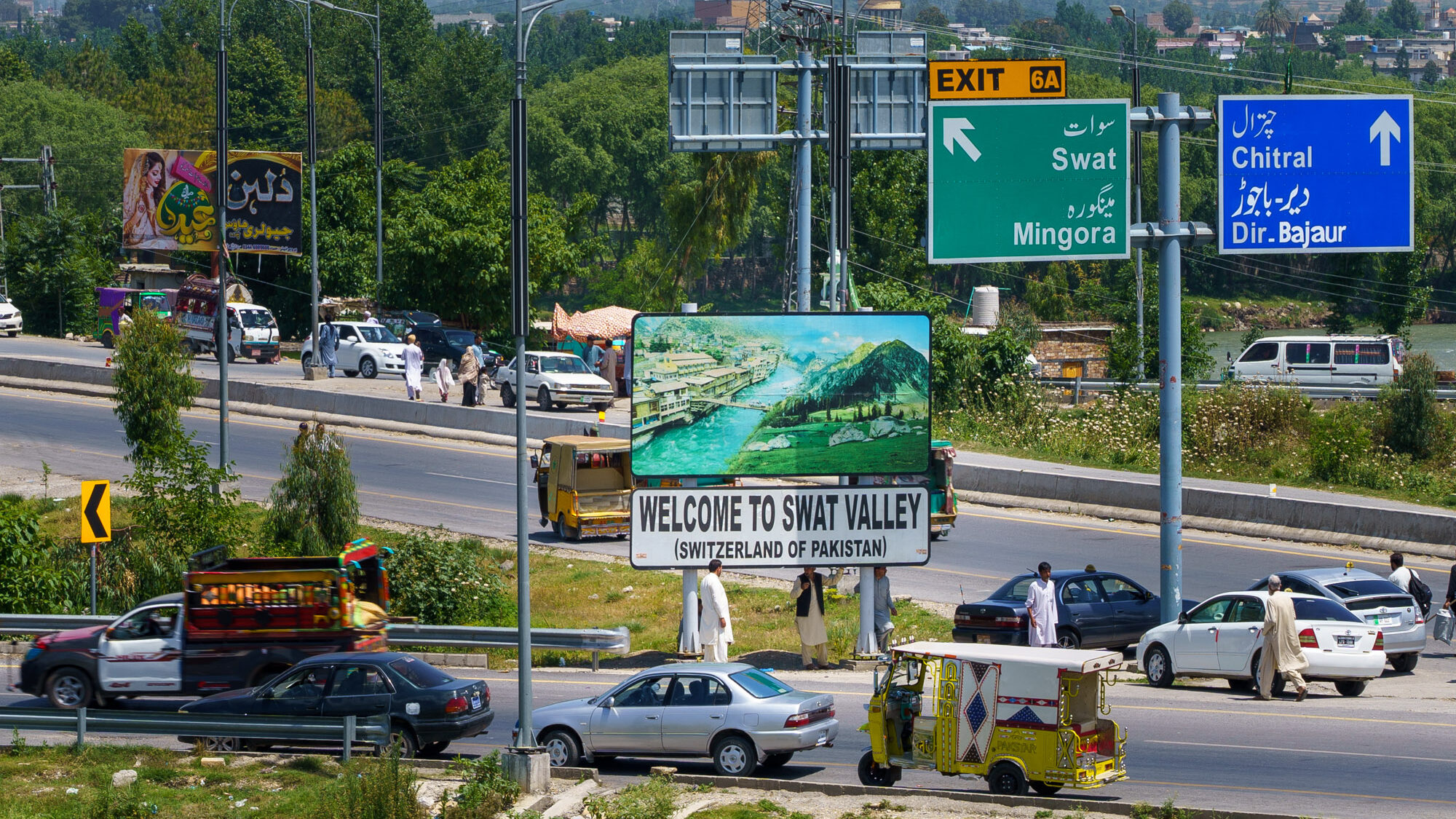
Our hotel, a former Prime Minister’s residence built in 1935, offered a glimpse into colonial grandeur. The afternoon unfolded with explorations of Butkara, an ancient Buddhist site, and bustling city streets filled with locals heading to Friday prayers.
Day 4 & 5: Swat Valley & The Kalash People
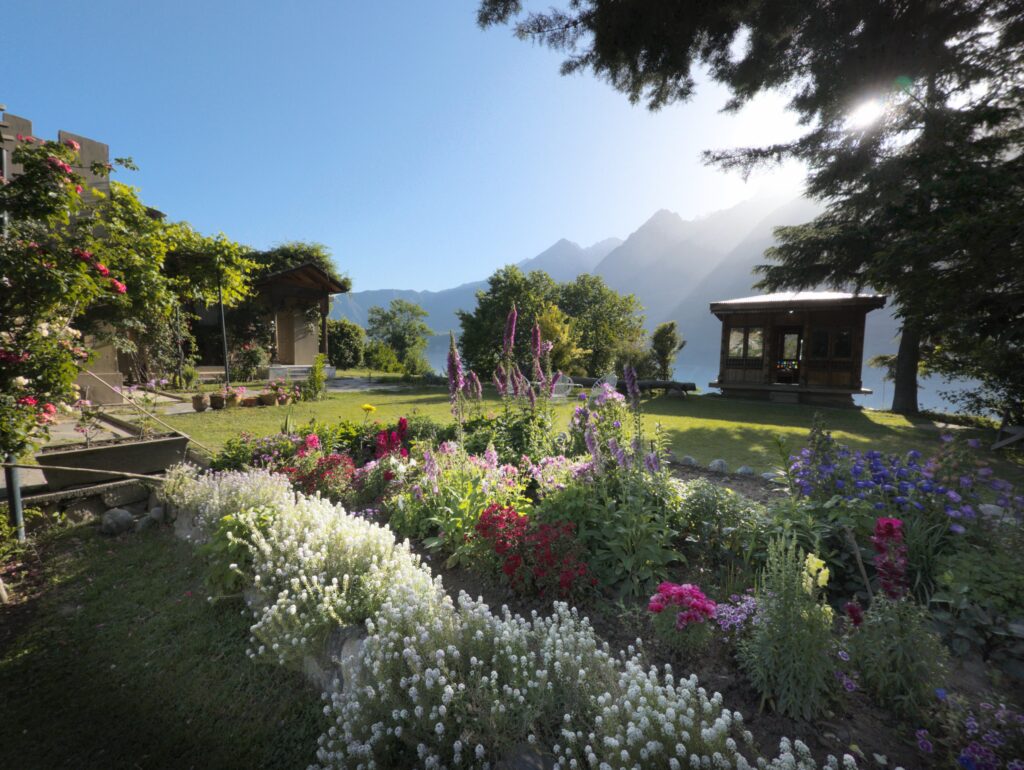
The long drive to Chitral, the ancient kingdom, was punctuated by more police escorts. An overnight stop at the home of Maqsood Ul Mulk, a local prince, offered a fascinating glimpse into the region’s rich heritage and his impressive botanical garden worthy of a spot of the BBC’s Gardeners World!
We then switched to rugged Willy Jeeps for the bumpy ascent into the Kalash Valley. Balanguru, a Kalash village, became our home for the next few days. As we settled in to our basic, but comfortable, accommodation, the vibrant Joshi festival, a celebration of life and fertility, was already underway.
Day 6: The Kalash Joshi Festival
Today, we walked to a village closer to the Afghan border, our exploration limited by police checkpoints. The afternoon was dedicated to witnessing the culmination of the Joshi festival. Women in colorful attire danced alongside men performing energetic circular dances.
The grand finale involved everyone waving walnut branches to banish evil spirits from the valley, followed by a final, chaotic dance linked by a single piece of fabric.
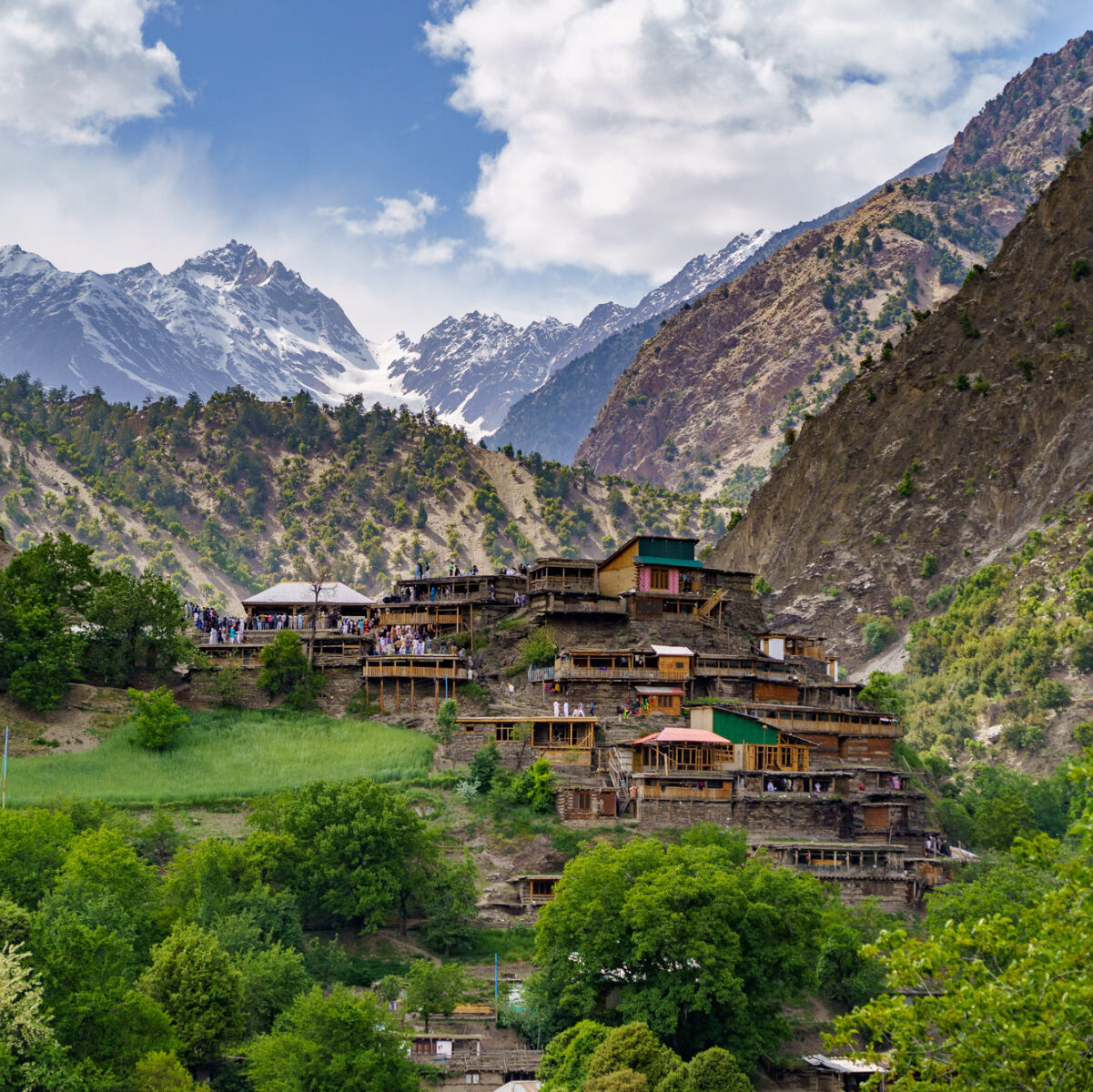
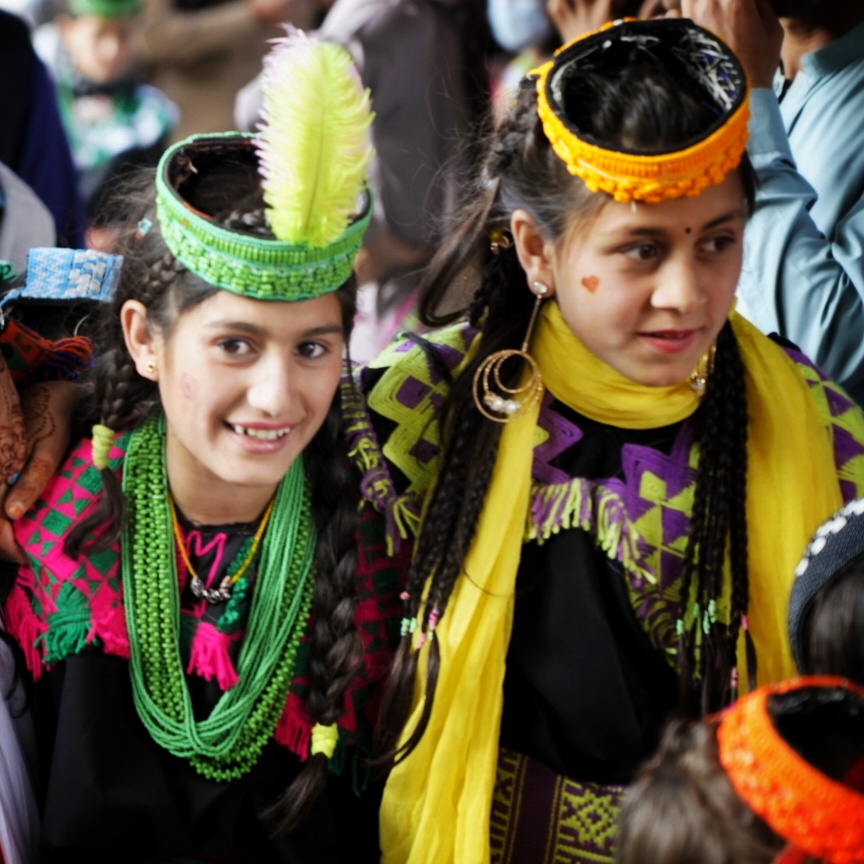
Day 7: Kalash to Chitral
Bidding farewell to the hospitable Kalash people, we retraced our steps back to Chitral. A small local museum showcased the region’s ethnography and its historical ties to the British.
After lunch, we ventured into the Chitral National Park, hoping for a glimpse of the elusive Markhor, a mountain antelope. While successful, the distance made proper viewing a challenge.
Our luxurious accommodation for the night was another prince’s property, offering stunning views out over the Chitral Valley from each room’s balcony.
Day 8: Chitral to Mastuj – A Bumpy Ride with a View
Another long and bumpy jeep ride awaited us, this time leading to Mastuj, nestled in the Yarkhun Valley. Our basic accommodation, wooden cabins next to a ruined fort, paled in comparison to the luxurious stay in Chitral. But the warmth of a crackling fire and comfortable armchairs made up for the simplicity.
Day 9: Mastuj to Ghizer Valley – The Highest Polo Ground in the World
Today’s journey served as a scenic transit day, culminating in the breathtaking crossing of the Shandur Pass at 3,800 meters. This plateau boasts the world’s highest polo ground, empty today, but the scene of vibrant summer polo festivals.
Day 10: Reaching Hunza – The Majesty of the Karakoram
Leaving the Hindu Kush mountains behind, we entered the mighty Karakoram range. Gilgit, once the furthest outpost of the British empire, marked the point where the Indian and Eurasian tectonic plates collide.
Continuing onwards, we reached Hunza, specifically Karimabad, where our hotel, itself at 2,850m, offered spectacular views of several snow-capped peaks each exceeding 7,000m.
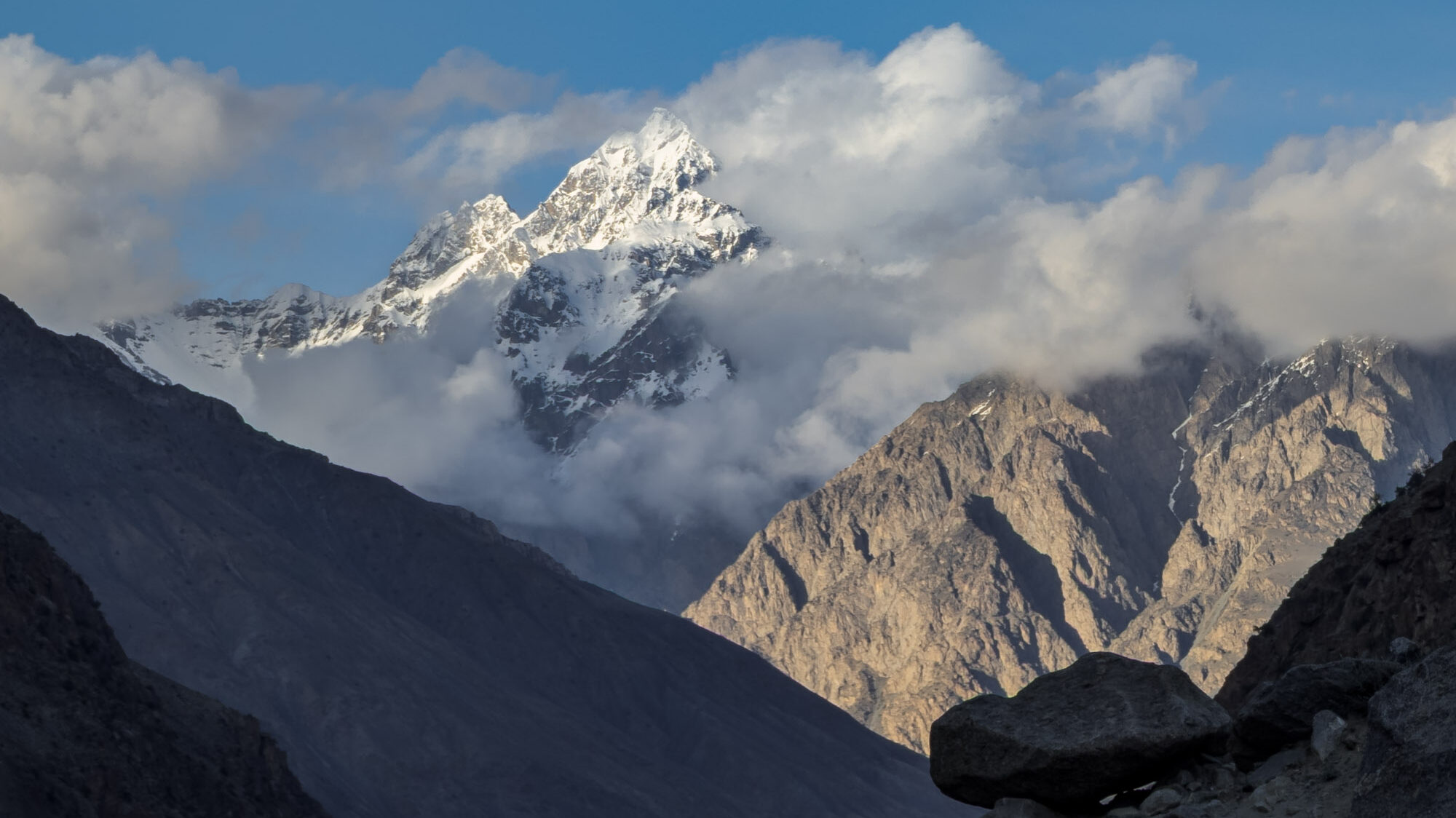
Day 11: Unveiling Hunza’s Treasures
This morning, after opting to skip the 4.30am wake-up to watch the sun rising over Rakaposhi and the other mountains, we took a short walk through the charming town of Hunza, ending, at a local restaurant for lunch. Feeling energized, we tackled the uphill climb to Baltit Fort.
Restored by the Aga Khan Trust for Culture and now a UNESCO World Heritage Site, the fort offered a glimpse into the region’s rich history and stunning mountain views.
Finally, we wandered through the bustling bazaar, a kaleidoscope of colours and textures. No visit to Hunza would be complete without a stop at the legendary Café de Hunza. Their famous Hunza Walnut Cake, paired with a cup of their steaming coffee, was the perfect afternoon treat.
Day 12: A Day of Glacial Wonders and Breathtaking Vistas

Today’s adventure took us on a journey to visit some nearby glaciers. Our first stop was the Hoper Glacier, sadly retreating due to climate change. The once vibrant white and blue had faded to a mass of cracked black ice.
Further along our route, the bright blue Attabad Lake unfolded before us. This relatively new wonder was formed after a massive landslide in 2010 blocked the Hunza River.
The Batura Glacier, the world’s 5th longest, echoed the fate of the Hoper Glacier, its once pristine form now marred by receding ice and a coat of dust.
Continuing our journey, the majestic Passu Cones, a collection of sharp peaks, greeted us and the nearby Glacier Cafe, despite the climb required to reach it, offered an irresistible reward – their legendary apricot cake. Each mouthful was worth the effort!
Day 13: Back to Gilgit – A Luxurious Respite
Bidding farewell to Hunza’s magic, we started our journey back south to Islamabad. The bustling city of Gilgit became our home for the night. The Gilgit Serena Hotel, a haven of luxury, offered a welcome respite from the bumpy roads and basic accommodations of the past days.
Day 14: Unexpected Detours on the Karakoram Highway
Our initial plan to reach Besham via the Babusar Pass had to be scrapped due to a recent avalanche and a glacial dam threatening to break. Instead, we embarked on a journey down the Karakoram Highway (KKH).
Massive dam construction projects along the valley meant heavy traffic and frequent roadblocks. Patience became our virtue as we waited for controlled explosions by the workforce, and subsequent work to clear the way. Finally, after hours of delays, we reached our hotel in Besham, exhausted but grateful for a warm bed.
Day 15: A Touch of History – Taxila
The final leg of our journey began with a stop at Taxila, an ancient Buddhist university town dating back to Alexander the Great’s era. Though the remnants of this once great centre of learning stand silent, their historical significance echoes through the ages. Taxila’s ruins, now a UNESCO World Heritage Site, offered a glimpse into Pakistan’s and diverse cultural rich past.
Day 16: Islamabad Farewell – Until We Meet Again
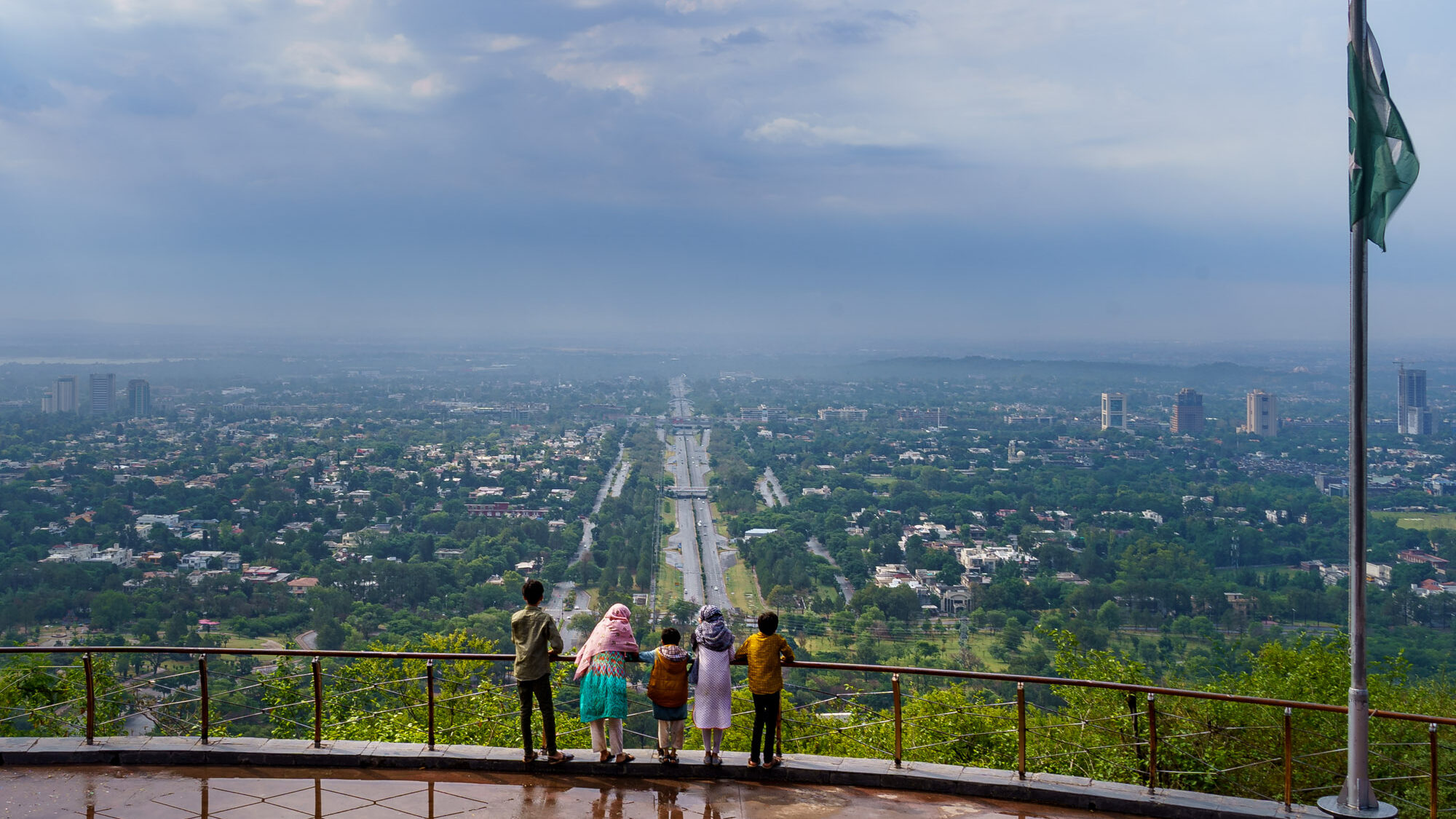
Our last morning in Islamabad was dedicated to exploring the city’s key sites. Daman-Koh Park, perched on the hills above, offered a panoramic view of the city grid sprawled beneath us. The Faisal Mosque, one of the world’s largest, captivated us with its modern architecture. Our final stop was the Lok Virsa Museum, a treasure trove showcasing Pakistan’s diverse culture and traditions.
With a final lunch, and a suitcase full of memories, we headed back to the airport. As the plane soared into the sky, I knew this wasn’t goodbye, but rather a “see you soon” to this land of unexpected wonders.

